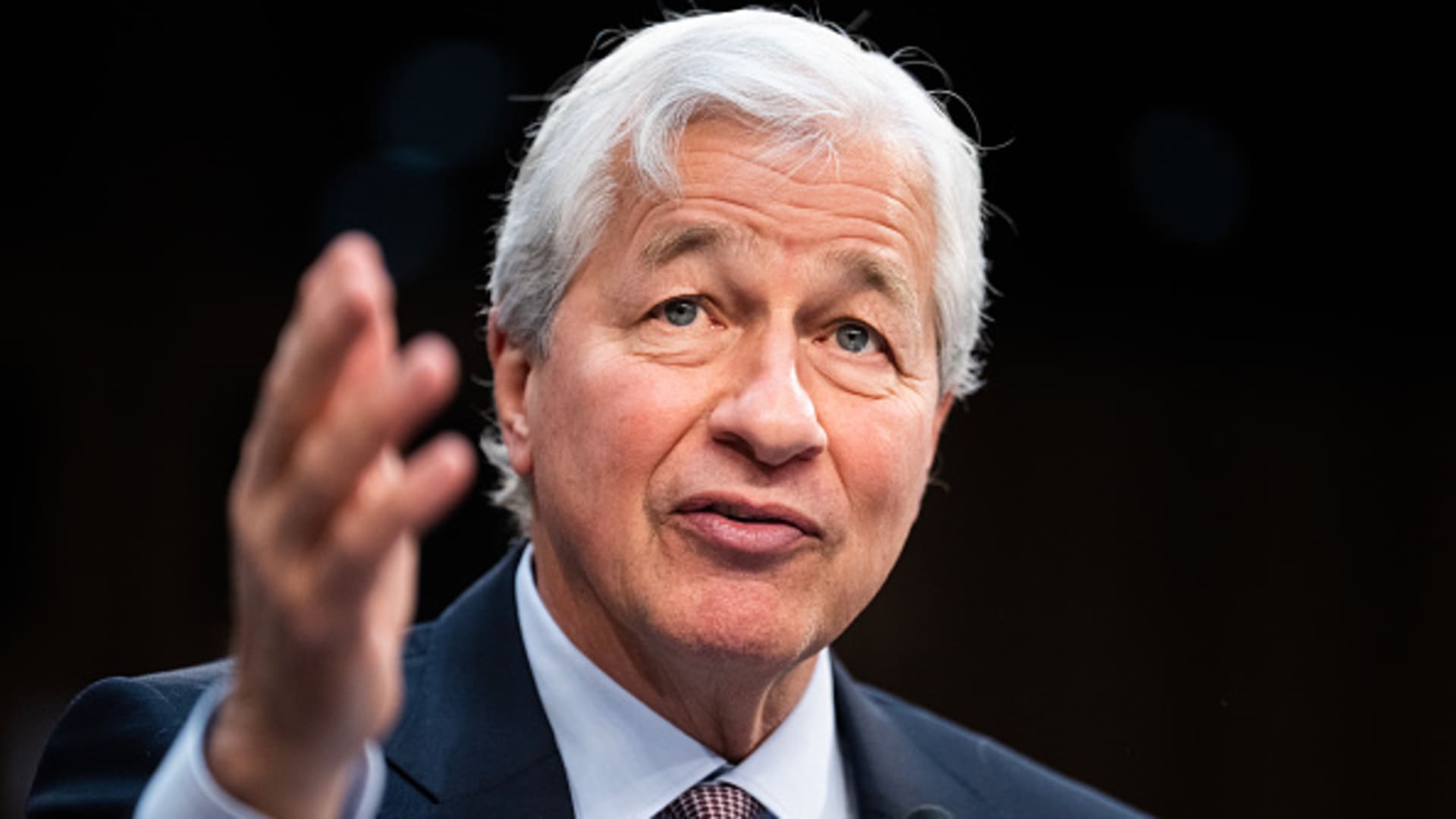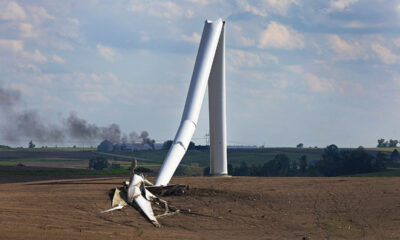Finance
Will October’s inflation increase slow the pace of interest rate cuts?
Published
7 months agoon


Housing costs remain a major factor in inflation. (iStock)
Inflation increased to 2.6% in October, rising modestly from the previous month, according to the Consumer Price Index (CPI) released by the Bureau of Labor Statistics (BLS).
In October, inflation was above the annual inflation rate of 2.4% in September, and it increased 0.2% on a monthly basis, according to BLS. The cost of housing was the most significant contributor to the monthly increase in October, accounting for over half of the rise of the monthly all-items index. The price of food also increased by 0.2% in October. Energy prices remained unchanged after dropping 1.9% in the previous months. These lower prices are helping to bring down the overall cost of goods and services, offsetting increases in other parts of the economy.
If the pace of price increases continues to mount, it may influence the Federal Reserve’s pace of interest rate cuts. Last week, the Fed announced a highly anticipated quarter of a percentage point cut, lowering interest rates to between 4.5% and 4.75%. However, inflation has moderated substantially over the last two years, from a peak of 7% to 2.6%. Fed Chair Jerome Powell said the Fed remains committed to maintaining the U.S. economy’s strength by supporting maximum employment and returning inflation to its 2% goal.
“Markets have dialed back expectations for another cut and are currently pricing in somewhat lower ~60% odds of that outcome,” Realtor.com Chief Economist Danielle Hale said. “The November jobs report, due out in early December, is likely to be an important input in that decision alongside the latest inflation reading.”
For now, moderate inflation and the Fed’s dialing back of interest rates are likely to give consumers space to spend as the holiday season approaches, according to Gabe Abshire, CEO of Move Concierge.
“The average American consumer is still feeling the pinch of inflation, but not to the same extent as last year when it greatly hampered monthly household spending,” Abshire said. “As we move into the holiday spending season, we anticipate strong retail sales and a slow winter homebuying season.”
If you are struggling with high inflation, you could consider taking out a personal loan to pay down debt at a lower interest rate, reducing your monthly payments. Visit Credible to find your personalized interest rate without affecting your credit score.
BEST PERSONAL LOANS OF NOVEMBER 2024
Rate cut pace may slow
Bringing inflation down to the 2% target rate is likely to be the biggest challenge, according to Jim Baird, chief investment officer with Plante Moran Financial Advisors. Baird said that adding to the challenge may be how President-elect Donald Trump’s administration’s trade and fiscal policy plays out and the slow pace of cooling in the cost of housing and other services. These factors combined could lead to some volatility in inflation.
While it’s unlikely that the Fed would reverse course on its interest rate cuts, they could slow down the timing and pace of rate cuts next year. The Fed said in September it anticipated that if the economy evolves as expected, the Fed could dial back the federal funds rate to 4.4% at the end of this year and 3.4% by the end of 2025.
“With consecutive rate cuts now in the Fed’s back pocket, there is a broad sense that officials can view further easing through a more critical lens, particularly given the sustained positive momentum in GDP growth,” Baird said. “The economy has continued to grow at a solid pace, lifted by a resurgence in consumption, raising doubts about the ability of or need for short-term rates to be slashed as aggressively as the Fed’s projections have suggested.”
Using a personal loan to pay off high-interest debt at a lower rate could help you reduce your expenses and put money back in your wallet. You can visit Credible to find your personalized interest rate today.
GROW YOUR MONEY FASTER: 5 ALTERNATIVES TO A SAVINGS ACCOUNT
Car insurance prices ease
Car insurance decreased 0.1% in October and the rate of annual increase slowed for a sixth straight month, according to today’s CPI report. That should be welcome news for drivers who have seen insurance costs soar over the last two years.
Insurance costs are still high, but the signs are there that the worst may be over, according to Josh Damico, vice president for insurance operations at Jerry. Damico said that claims-related costs that have driven insurers’ rate increases have stalled or fallen in recent months. Used car prices are down 18% from their peak in early 2022, while motor vehicle parts and equipment rose only 2.3% annually in October after flatlining for most of 2024.
“With claims-related cost pressures easing, many insurers are pausing rate hikes while others are unwinding some of their recent increases,” Damico said. “The rise in repair costs is a bit concerning, but the carriers feel good about vehicle prices and are looking to sell more policies.”
If you want to save money on your car costs, you could consider changing your auto insurance provider to get a lower monthly rate. Visit Credible to shop around and find your personalized premium.
WHY DO MY CAR INSURANCE PREMIUMS KEEP GOING UP?
Have a finance-related question, but don’t know who to ask? Email The Credible Money Expert at [email protected] and your question might be answered by Credible in our Money Expert column.
You may like
Finance
Why JPMorgan hired NOAA’s Sarah Kapnick as chief climate scientist
Published
1 hour agoon
May 31, 2025
Sarah Kapnick started her career in 2004 as an investment banking analyst for Goldman Sachs. She was struck almost immediately by the overlap of financial growth and climate change, and the lack of client advisory around that theme.
Integrating the two, she thought, would help investors understand both the risks and opportunities, and would help them use climate information in finance and business operations. With a degree in theoretical mathematics and geophysical fluid dynamics, Kapnick saw herself as uniquely positioned to take on that challenge.
But first, she had to get deeper into the science.
That led her to more study and then to the National Oceanic and Atmospheric Administration (NOAA), the nation’s scientific and regulatory agency within the U.S. Department of Commerce. Its defined mission is to understand and predict changes in climate, weather, oceans and coasts and to share that knowledge and information with others.
In 2022, Kapnick was appointed NOAA’s chief scientist. Two years later, JPMorgan Chase hired her away, but not as chief sustainability officer, a role common at most large investment banks around the world and a position already filled at JPMorgan.
Rather, Kapnick is JPMorgan’s global head of climate advisory, a unique job she envisioned back in 2004.
Just days before the official start of the North American hurricane season, CNBC spoke with Kapnick from her office at JPMorgan in New York about her current role at the bank and how she’s advising and warning clients.
Here’s the Q&A:
(This interview has been lightly edited for length and clarity.)
Diana Olick, CNBC: Why does JPMorgan need you?
Sarah Kapnick, JPMorgan global head of climate advisory: JPMorgan and banks need climate expertise because there is client demand for understanding climate change, understanding how it affects businesses, and understanding how to plan. Clients want to understand how to create frameworks for thinking about climate change, how to think about it strategically, how to think about it in terms of their operations, how to think about it in terms of their diversification and their long-term business plans.
Everybody’s got a chief sustainability officer. You are not that. What is the difference?
The difference is, I come with a deep background in climate science, but also how that climate science translates into business, into the economy. Working at NOAA for most of my career, NOAA is a science agency, but it’s science agency under the Department of Commerce. And so my job was to understand the future due to physics, but then be able to translate into what does that mean for the economy? What does that mean for economic development? What does that mean for economic output, and how do you use that science to be able to support the future of commerce? So I have this deep thinking that combines all that science, all of that commerce thinking, that economy, how it translates into national security. And so it wraps up all these different issues that people are facing right now and the systematic issues, so that they can understand, how do you navigate through that complexity, and then how do you move forward with all that information at hand?
Give us an example, on a ground level, of what some of that expertise does for investors.
There’s a client that’s concerned about the future of wildfire risk, and so they’re asking, How is wildfire risk unfolding? Why is it not in building codes? How might building codes change in the future? What happens for that? What type of modeling is used for that, what type of observations are used for that? So I can explain to them the whole flow of where is the data? How is the data used in decisions, where do regulations come from. How are they evolving? How might they evolve in the future? So we can look through the various uncertainties of different scenarios of what the world looks like, to make decisions about what to do right now, to be able to prepare for that, or to be able to shift in that preparation over time as uncertainty comes down and more information is known
So are they making investment decisions based on your information?
Yes, they’re making investment decisions. And they’re making decisions of when to invest because sometimes they have a knowledge of something as it’s starting to evolve. They want to act either early or they want to act as more information is known, but they want to know kind of the whole sphere of what the possibilities are and when information will be known or could be known, and what are the conditions that they will know more information, so they can figure out when they want to act, when that threshold of information is that they need to act.
How does that then inform their judgment on their investment, specifically on wildfire?
Because wildfire risk is growing, there’ve been a few events like the Los Angeles wildfires that were recently seen. The questions that I’m getting are could this happen in my location? When will it happen? Will I have advanced notice? How should I change and invest in my infrastructure? How should I think about differences in my infrastructure, my infrastructure construction? Should I be thinking about insurance, different types of insurance? How should I be accessing the capital markets to do this type of work? It’s questions across a range of trying to figure out how to reduce vulnerability, how to reduce financial exposure, but then also, if there are going to be risks in this one location, maybe there are more opportunities in these other locations that are safer, and I should be thinking of them as well. It’s holistically across risk management and thinking through risk and what to do about it, but then also thinking about what opportunities might be emerging as a result of this change in physical conditions in the world.
But you’re not an economist. Do you work with others at JPMorgan to augment that?
Yes, my work is very collaborative. I work across various teams with subject matter experts from different sectors, different industries, different parts of capital, and so I come with my expertise of science and technology and policy and security, and then work with them in whatever sphere that they’re in to be able to deliver the most to the bank that we can for our clients.
With the cuts by the Trump administration to NOAA, to FEMA, to all of the information gathering sources — we’re not seeing some of the things that we normally see in data. How is that affecting your work?
I am looking to what is available for what we need, for whatever issue. I will say that if data is no longer available, we will translate and move into other data sets, use other data sets, and I’m starting to see the development out in certain parts of the private sector to pull in those types of data that used to be available elsewhere. I think that we’re going to see this adjustment period where people search out whatever data it is they need to answer the questions that they have. And there will be opportunities. There’s a ton of startups that are starting to develop in that area, as well as more substantial companies that have some of those data sets. They’re starting to make them available, but there’s going to be this adjustment period as people figure out where they’re going to get the information that they need, because many market decisions or financial decisions are based on certain data sets that people thought would always be there.
But the government data was considered the top, irrefutable, best data there was. Now, how do we know, when going to the private sector, that this data is going to be as credible as government data?
There’s going to be an adjustment period as people figure out what data sets to trust and what not to trust, and what they want to be using. This is a point in time where there is going to be adjustment because something that everyone got used to working with, they now won’t have that. And that is a question that I’m getting from a lot of clients, of what data set should I be looking for? How should I be assessing this problem? Do I build in-house teams now to be able to assess this information that I didn’t have before? And I’m starting to see that occurring across different sectors, where people are increasingly having their own meteorologist, their own climatologist, to be able to help guide them through some of these decisions.
Final thoughts?
Climate change isn’t something that is going to happen in the future and impact finance in the future. It’s something that is a future risk that is now actually finding us in the bottom line today.
Finance
Daniel Loeb’s next task as his hedge fund turns 30: Avoiding becoming ‘AI roadkill’
Published
20 hours agoon
May 30, 2025
Daniel Loeb has found himself a new goal as his hedge fund Third Point entered its milestone 30th year: To be a true winner in the red-hot artificial intelligence boom and not run over by it. “Change is happening at an ever accelerating and increasing rate and it’s just going to require us to continue to be even more nimble, and to use AI as your own tool to stay on top of what’s going on,” Loeb told CNBC’s Scott Wapner at Third Point’s investor day Thursday. “You’ll either be a beneficiary of AI or AI roadkill. So I think we all need to do our best to not be the latter.” AI has dominated Wall Street’s investing theme over the past two years as investors left and right seek to hit home runs in the space, from chipmakers to hardware producers to car companies and utilities. Loeb, once known for his sharp brand of activism, has emerged as a big AI bull in recent years, increasing his fund’s AI exposure to nearly half of its equity portfolio in 2024. Ways Loeb is playing AI The hedge-fund investor not only owns “legacy” companies like Meta , Nvidia , Microsoft and Amazon — which he said have built enormous competitive advantages — but he is also betting on AI beneficiary London Stock Exchange Group and chipmaker Taiwan Semiconductor Manufacturing . “It’s a pervasive component of our research process… It’s a variable in which we benchmark all of the companies that we invest in, both in terms of how they’re using it… whether it’s cloud companies or Amazons or Microsofts and how they’re directly benefiting from it,” Loeb said. Three decades ago, Loeb started Third Point with $3.2 million cobbled together from friends and family. Today, the hedge fund touts over $20 billion assets under management and net returns of 15% since inception, weathering the dotcom crash, the 2008 financial crisis and the Covid pandemic. Known for being one of the best activist investors ever, he’s grown the firm to include a significant credit and venture business. On today’s market environment, Loeb believes the short-term uncertainty will start to fade by next year and investors picking quality, growth stocks with fair prices will be rewarded in the long run. “I think it will be ok.. I think we’ll start looking towards a better, more predictable 2026,” Loeb said. “I think there will definitely be winners and losers. The economy will grow at about a one-percent rate unless something comes out of left field, so I think it’s a good environment for investing in growthy companies at good valuations.” He also revealed that Third Point got back into US Steel a month or so ago in the $30s range in a bet that its path to a deal with Nippon Steel would materialize. CNBC reported this week that Nippon is expected to close acquisition of U.S. Steel at $55 per share.

Jamie Dimon, CEO of JPMorgan Chase, testifies during the Senate Banking, Housing and Urban Affairs Committee hearing titled Annual Oversight of Wall Street Firms, in the Hart Building on Dec. 6, 2023.
Tom Williams | Cq-roll Call, Inc. | Getty Images
The more Jamie Dimon worries, the better his bank seems to do.
As JPMorgan Chase has grown larger, more profitable and increasingly more crucial to the U.S. economy in recent years, its star CEO has grown more vocal about what could go wrong — all while things keep going right for his bank.
In the best of times and in the worst of times, Dimon’s public outlook is grim.
Whether it’s his 2022 forecast for a “hurricane” hitting the U.S. economy, his concerns over the fraying post-WWII world order or his caution about America getting hit by a one-two punch of recession and inflation, Dimon seems to lace every earnings report, TV appearance and investor event with another dire warning.
“His track record of leading the bank is incredible,” said Ben Mackovak, a board member of four banks and investor through his firm Strategic Value Bank Partner. “His track record of making economic-calamity predictions, not as good.”
Over his two decades running JPMorgan, Dimon, 69, has helped build a financial institution unlike any the world has seen.
A sprawling giant in both Main Street banking and Wall Street high finance, Dimon’s bank is, in his own words, an end-game winner when it comes to money. It has more branches, deposits and online users than any peer and is a leading credit card and small business franchise. It has a top market share in both trading and investment banking, and more than $10 trillion moves over its global payment rails daily.
‘Warning shot’
A review of 20 years of Dimon’s annual investor letters and his public statements show a distinct evolution. He became CEO in 2006, and his first decade at the helm of JPMorgan was consumed by the U.S. housing bubble, the 2008 financial crisis and its long aftermath, including the acquisition of two failed rivals, Bear Stearns and Washington Mutual.
By the time he began his second decade leading JPMorgan, however, just as the legal hangover from the mortgage crisis began to fade, Dimon began seeing new storm clouds on the horizon.
“There will be another crisis,” he wrote in his April 2015 CEO letter, musing on potential triggers and pointing out that recent gyrations in U.S. debt were a “warning shot” for markets.
That passage marked the start of more frequent financial warnings from Dimon, including worries of a recession — which didn’t happen until the 2020 pandemic triggered a two-month contraction — as well as concerns around market meltdowns and the ballooning U.S. deficit.
But it also marked a decade in which JPMorgan’s performance began lapping rivals. After leveling out at roughly $20 billion in annual profit for a few years, the sprawling machine that Dimon oversaw began to truly hit its stride.
JPMorgan generated six record annual profits from 2015 to 2024, twice as many as in Dimon’s first decade as CEO. JPMorgan is now the world’s most valuable publicly traded financial firm and is spending $18 billion annually on technology, including artificial intelligence, to stay that way.
While Dimon seems perpetually worried about the economy and rising geopolitical turmoil, the U.S. economy keeps chugging along. That means unemployment and consumer spending has been more resilient than expected, allowing JPMorgan to make record profits.
In 2022, Dimon told a roomful of professional investors to prepare for an economic storm: “Right now, it’s kind of sunny, things are doing fine, everyone thinks the Fed can handle this,” Dimon said, referring to the Federal Reserve managing the post-pandemic economy.
“That hurricane is right out there, down the road, coming our way,” he said.
“This may be the most dangerous time the world has seen in decades,” Dimon said the following year in an earnings release.
But investors who listened to Dimon and made their portfolios more conservative would’ve missed on the best two-year run for the S&P 500 in decades.
‘You look stupid’
“It’s an interesting contradiction, no doubt,” Mackovak said about Dimon’s downbeat remarks and his bank’s performance.
“Part of it could just be the brand-building of Jamie Dimon,” the investor said. “Or having a win-win narrative where if something goes bad, you can say, ‘Oh, I called it,’ and if doesn’t, well your bank’s still chugging along.”
According to the former president of a top five U.S. financial institution, bankers know that it’s wiser to broadcast caution than optimism. Former Citigroup CEO Chuck Prince, for example, is best known for his ill-fated comment in 2007 about the mortgage business that “as long as the music is playing, you’ve got to get up and dance.”
“One learns that there’s a lot more downside to your reputation if you are overly optimistic and things go wrong,” said this former executive, who asked to remain anonymous to discuss Dimon. “It’s damaging to your bank, and you look stupid, whereas the other way around, you just look like you’re being a very cautious, thoughtful banker.”
Banking is ultimately a business of calculated risks, and its CEOs have to be attuned to the downside, to the possibility that they don’t get repaid on their loans, said banking analyst Mike Mayo of Wells Fargo.
“It’s the old cliché that a good banker carries an umbrella when sun is shining; they’re always looking around the corner, always aware of what could go wrong,” Mayo said.
But other longtime Dimon watchers see something else.
Dimon has an “ulterior motive” for his public comments, according to Portales Partners analyst Charles Peabody.
“I think this rhetoric is to keep his management team focused on future risks, whether they happen or not,” Peabody said. “With a high-performing, high-growth franchise, he’s trying to prevent them from becoming complacent, so I think he’s ingrained in their culture a constant war room-type atmosphere.”
Dimon has no shortage of things to worry about, despite the fact that his bank generated a record $58.5 billion in profit last year. Conflicts in Ukraine and Gaza rage on, the U.S. national debt grows and President Donald Trump‘s trade policies continue to jolt adversaries and allies alike.
Graveyard of bank logos
“It’s fair to observe that he’s not omniscient and not everything he says comes true,” said Truist bank analyst Brian Foran. “He comes at it more from a perspective that you need to be prepared for X, as opposed to we’re convinced X is going to happen.”
JPMorgan was better positioned for higher interest rates than most of its peers were in 2023, when rates surged and punished those who held low-yielding long-term bonds, Foran noted.
“For many years, he said ‘Be prepared for the 10 year at 5%, and we all thought he was crazy, because it was like 1% at the time,” Foran said. “Turns out that being prepared was not a bad thing.”
Perhaps the best explanation for Dimon’s dour outlook is that, no matter how big and powerful JPMorgan is, financial companies can be fragile. The history of finance is one of the rise and fall of institutions, sometimes when managers become complacent or greedy.
In fact, the graveyard of bank logos that are no longer used includes three — Bear Stearns, Washington Mutual and First Republic — that have been subsumed by JPMorgan.
During his bank’s investor day meeting this month, Dimon pointed out that, in the past decade, JPMorgan has been one of the only firms to earn annual returns of more than 17%.
“If you go back to the 10 years before that, OK, a lot of people earned over 17%,” Dimon said. “Almost every single one went bankrupt. Hear what I just said?
“Almost every single major financial company in the world almost didn’t make it,” he said. “It’s a rough world out there.”


Why JPMorgan hired NOAA’s Sarah Kapnick as chief climate scientist

How to save on summer travel in 2025

Denmark raises retirement age to 70; U.S. might follow

New 2023 K-1 instructions stir the CAMT pot for partnerships and corporations

The Essential Practice of Bank and Credit Card Statement Reconciliation

Are American progressives making themselves sad?
Trending
-

 Accounting1 week ago
Accounting1 week agoHouse tax bill includes provision eliminating PCAOB
-

 Economics1 week ago
Economics1 week agoWhat happens if the Inflation Reduction Act goes away?
-

 Personal Finance1 week ago
Personal Finance1 week agoWhat House Republican ‘big beautiful’ budget bill means for your money
-

 Accounting1 week ago
Accounting1 week agoTrump tax bill faces Senate’s arcane rules, desire for changes
-

 Finance1 week ago
Finance1 week agoPersonal finance app Monarch raises $75 million
-

 Economics1 week ago
Economics1 week agoHow much worse could America’s measles outbreak get?
-

 Economics1 week ago
Economics1 week agoA court resurrects the United States Institute of Peace
-

 Economics1 week ago
Economics1 week agoCalifornia has got really good at building giant batteries
